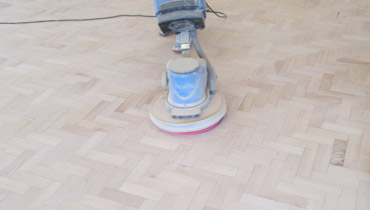Monday - Friday 07:30 - 17:30, Saturday 07:30 - 16:00
Affordable Parquet Floor Restoration in East London

Many people dream of having beautiful wooden flooring in their home or office. But, the thing most of them do not realise is that you truly have to look after the wood, and this includes some sanding and restoration procedures now and then. Parquet sanding, however, is something that you can only do a few times, depending on the wood. Parquet sanding in particular is quite tricky, so despite the thousands of online tips on how to do it yourself, to save money, any homeowner should keep in mind that the best results can only be achieved by professionals. Our experts have years of experience in the industry and could provide you with the greatest results for moderate prices. Assuming that a lot of potential customers would walk away from our offer, trusting occasional articles on the net, we’ve decided to resume the whole process, to give a better idea of its complexity and the skills required for the job.
Same as other home improvement jobs, meticulous preparation is the key to success, as well as using the proper equipment, tools and products. Dedicating enough time to get the work done is also a must. To start with, the whole floor should be checked for unstable blocks, that are no longer firmly attached to the underfloor, they usually squeak or slightly move when you step on them. The boards may have gaps between them, developed over the years. This is the most convenient time for filling these gaps and glueing down loose planks. It’s also crucial to clean the whole surface with a detergent that dissolves wax, especially if the base is old. Commonly, you are dealing with several layers, which would only get in the way of the sanding machines. If laying a brand-new parquet, the underfloor should also be cleared out and levelled.
А concern worth clarifying before our team even starts the sanding process is the thickness of the wood. It is good to know how many times so far the parquet has been sanded or if it has undertaken any restoration at all. If our machines take off too much material, that could expose tongues and grooves. To be on the safe side, we try to be as efficient as possible and usually try to go as fine as we can.
Stains offer to penetrate the timber and provide some extra protection by sealing the wood. Our team usually stains the floor in sections and we try to work toward the doorway, so we don’t need to step on the freshly stained surface. Most stains should be left overnight to dry.
The final step is the finishing. The choice of the correct product is crucial here. Usually, oils and waxes are recommended, as they show off your restored floor best. They create a protective layer, against dirt and moisture. Usually, a couple of coats are needed; the last one should be left un-sanded. This is just a summary of it all. For detailed information, call 020 70360625, schedule an appointment, and take care of your parquet, now!